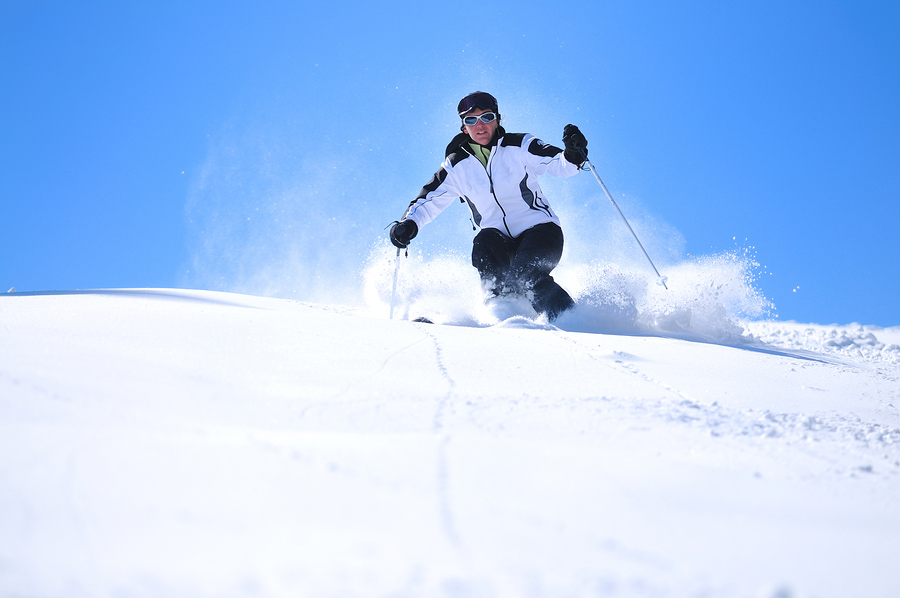
Skiing is a wonderful way to stay in shape as you enjoy the snowy winter weather. Many of our clients ski – and some of them will find their way to our Toronto physiotherapy and sports medicine clinics with injuries and other conditions related to skiing. Here’s a look at some common skiing injuries and how to avoid them.
Leg Injuries
- Sprains are the most common leg injuries found in skiers, with fractures coming in second. Fractures to the shin and thighbones are typically caused by falls and collisions with objects on the way down.
- Medial Collateral Ligament (MCL) – this is the ligament that connects the shinbone and thighbone. MCL injuries are often caused when a skier falls down the hill while the skis are in the snow plough position. Making sure your weight is balanced in that position will help prevent falls. A sprain to the MCL is a very common injury that can be treated by a medical brace. Ask your Toronto physiotherapist or sports medicine specialist about what a brace can do for you.
- Anterior Cruciate Ligament (ACL)- this ligament is found in the mid-knee, and it keeps your shinbone and thighbone in the right place. It can be torn or ruptured if you fall backward even as your lower leg keeps pushing forward, and often occurs when landing a jump. This is a serious injury that can require surgery and extensive rehab.
Arm & Hand Injuries
Injuries to the arms and shoulder are common when skiing. The hands are a vulnerable part of the body, particularly the thumb.
-
The Ulnar Collateral Ligament – this connects the thumb to the hand near the index finger. It can be sprained or damage when you put out your hand to break a fall. The second you feel yourself falling, do yourself a favour and let go of your ski poles. That move alone will help to prevent what is often called skier’s thumb.
Prevention
There are two basic principles that will keep you safer on the slopes – education and physical conditioning.
-
Training – proper technique will help you to avoid undue strain on any body part, and help you both avoid falls, and minimize the effects if you do. The basic principles are: weight forward, hands forward, legs parallel. If you are a beginner or perhaps you only go skiing a few times a year or maybe you haven’t been skiing in some time, training by a professional will teach you the proper form.
-
Physical Conditioning – strengthening core, leg, and arm muscles will help you to avoid strain on ligaments and improve your balance on the slopes. Ask our Toronto sports medicine specialists about what kinds of exercises will benefit your training.
A few more quick tips:
-
Take breaks, and don’t push yourself too much. Fatigue can make you lose the correct form and you may fall more easily. It can also make you miss signs that you would otherwise catch to help avoid collisions.
-
Know your limits, and don’t push yourself beyond them. You’ll have to work your way up to the advanced slopes – be patient!
If you’re going skiing this winter or if you find yourself with a skiing injury, drop by one of our Toronto physiotherapy clinics or call us for an appointment. Our sports medicine specialists are highly trained and ready with advice along with any treatments you require.
Sources
http://www.moveforwardpt.com/Resources/Detail/preventing-skiingrelated-knee-injuries
https://www.idahopress.com/maxread/west_valley/common-skiing-injuries-and-how-to-prevent-them/article_7a515c12-a8cc-11e5-b6db-afe972f510e1.html
https://backandbodyny.com/common-skiing-injuries-avoid/















